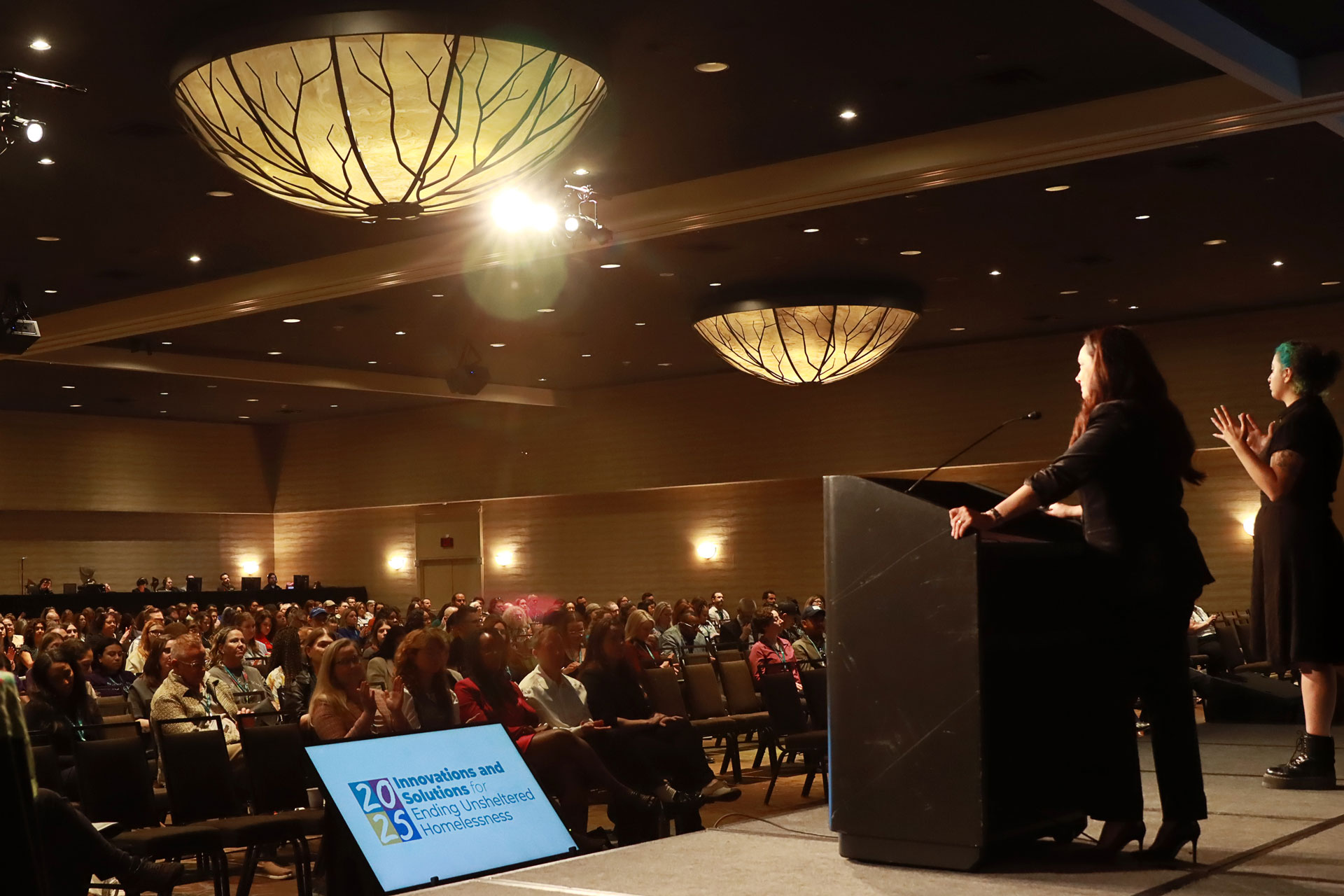Homeless service systems have always faced enormous challenges to do more with less. Simply put, there have never been enough resources to meet demand. This has forced tough decisions about how to prioritize services and determine who needs what – and when. There is often no easy answer, but identifying strategies to maximize these resources is a good first step. And with so many more dedicated homelessness resources as a result of emergency relief legislation, it is more important than ever that we use them in the most efficient and effective way possible to end homelessness for as many people as possible.
This is where a progressive engagement approach comes in.
A Person-Centered Approach
Progressive engagement is a person-centered approach to ending someone’s homelessness. It is based on tailoring assistance to each individual or household’s needs and assessing what works best for them, with their specific strengths, and in their specific situation.
Progressive engagement starts small by helping people with their immediate needs, in order to stay housed. Consider the following example: a young woman has been living with her cousin but not paying for any of the food. The cousin becomes frustrated because she can no longer afford the grocery bill, and asks her to leave. The young woman then finds herself at intake at a homelessness shelter.
Rather than immediately putting the young woman on a wait list for housing, the provider starts their interaction with a problem solving conversation. During the discussion, it becomes clear that the young woman qualifies for SNAP assistance (formerly known as “food stamps”), but is not receiving it. Knowing that this assistance will allow the young woman to contribute to her cousin’s monthly food costs, the provider has found a quick and relatively low-cost solution to the woman’s housing crisis.
But sometimes these smaller approaches do not resolve a person’s immediate housing crisis. With the progressive engagement approach, as greater (or lesser) needs are identified, the level of support is adjusted. This ensures that the people who have lower needs receive lighter-touch supports. More importantly, it ensures that those with the highest needs are able to access the highest levels of support when it has become clear that they will need more assistance. As a result, progressive engagement helps systems operate as efficiently as possible.
Progressive engagement can be used for any population at any level in the homelessness system. The strategy can be applied to individuals, families, people experiencing chronic homelessness, veterans, youth, and survivors of domestic violence. It also includes people who are newly homeless, and people in programs like Rapid Re-housing (RRH) and Permanent Supportive Housing (PSH) who are transitioning into their own housing.
Starting – and Maintaining – the Conversation
Progressive engagement is intended to take place throughout a person or family’s journey from homelessness to housing.
The problem-solving conversation starts at the first interaction with the homelessness system, whether that takes place during street outreach, shelter intake, or a coordinated entry access point.
From there, a progressive engagement approach requires the provider to communicate closely and consistently with a household. During these interactions, the provider is seeking to identify the household’s strengths, supports, barriers, and obstacles: What kind of progress are they making? What setbacks have they experienced? And what’s changed in their journey that might impact their level of need at this time? For example, has someone in the household gotten a new job with significantly more income? Or, conversely, has someone who was doing just fine without rental assistance experienced an employment setback that requires additional funding now?
Based on these ongoing problem-solving discussions, the provider can better determine whether the household’s existing supports are working, and collaboratively work to flex supports up or down as needed until the household’s housing crisis is resolved.
Meeting Clients Where They Are
Whereas other approaches may be guided by a sense that providers can “predict” what kind of intervention a household needs or by a desire to end a household’s poverty, progressive engagement meets each individual or household where they are and is focused on housing. Progressive engagement assesses a household’s unique strengths and circumstances to determine the lightest-touch interventions required to resolve their immediate housing crisis.
The Reality of the Situation
Ideally, there would be enough affordable housing resources immediately available to every household that needs assistance. But we know that isn’t the reality.
And while homeless crisis response systems are currently receiving unprecedented funds, the nation’s affordable housing crisis still looms. Ongoing economic fallout will continue to increase housing instability, which can result in increases in homelessness. In the midst of these pressures, progressive engagement allows homeless service systems and providers to assess the resources they have available and provide appropriate levels of support to as many people as possible.
Even with the arrival of much-needed new federal relief funds, it is all of our responsibilities to make sure we are allocating every resource as efficiently and effectively as possible. A progressive engagement approach achieves that goal.
Stay Updated: Solutions, Stories, and Ways to Make an Impact
Sign up to receive updates on the Alliance’s work, including the latest research, advocacy efforts, and real stories of progress — plus ways you can help drive lasting change.












